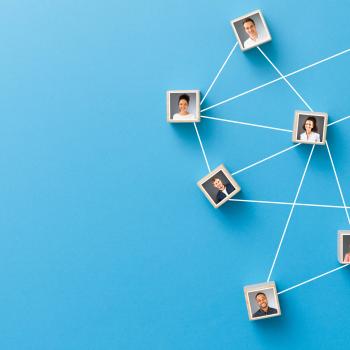Making Connections

In this strategy guide, you'll learn how to model how students can make three different kinds of connections (text-to-text, text-to-self, text-to-world). Students then use this knowledge to find their own personal connections to a text.
- Research Basis
- Strategy in Practice
- Related Resources
Research Basis
A majority of students in the upper elementary and middle grades are beyond decoding instruction and need more assistance with comprehension to help them become successful, independent readers. Strategic reading allows students to monitor their own thinking and make connections between texts and their own experiences. Students who make connections while reading are better able to understand the text they are reading. It is important for students to draw on their prior knowledge and experiences to connect with the text. Students are thinking when they are connecting, which makes them more engaged in the reading experience.
Students gain a deeper understanding of a text when they make authentic connections. However, teachers need to know how to show students how a text connects to their lives, another text they have read, or the world around them. In this strategy guide, you will learn how to model text-to-self, text-to-text, and text-to-world connections for your students so that they may begin to make personal connections to a text on their own.
Strategy in Practice
- Before practicing this strategy in the classroom, create a list of personal connections to the particular text for which you will be modeling this strategy.
- Explain to students that you are going to practice the comprehension strategy of making connections to find ways that students can personally relate to a text. Ask students to think about the following questions. You may choose to write these on the board or chart paper for students to see.
- Focusing on text-to-self connections:
- What does this story remind you of?
- Can you relate to the characters in the story?
- Does anything in this story remind you of anything in your own life?
- What does this remind you of in another book you have read?
- How is this text similar to other things you have read?
- How is this text different from other things you have read?
- What does this remind you of in the real world?
- How are events in this story similar to things that happen in the real world?
- How are events in this story different from things that happen in the real world?
- Good connections that enhance understanding:
- When I was in second grade, I moved to a new school like Shirley did. I remember feeling like everyone ignored me and missing my home, so I can relate to what she’s going through.
- Shirley likes the Dodgers. So do I.
- After you are certain that students have a firm understanding of making connections, allow them to begin listing their own connections to the text using the Double-Entry Journal and then expanding their connections with the Planning Web.
- Finally, students can organize and write an essay about a connection to the text using the Essay Map interactive or choose a different student interactive to use to create a project based on a connection to the text.


